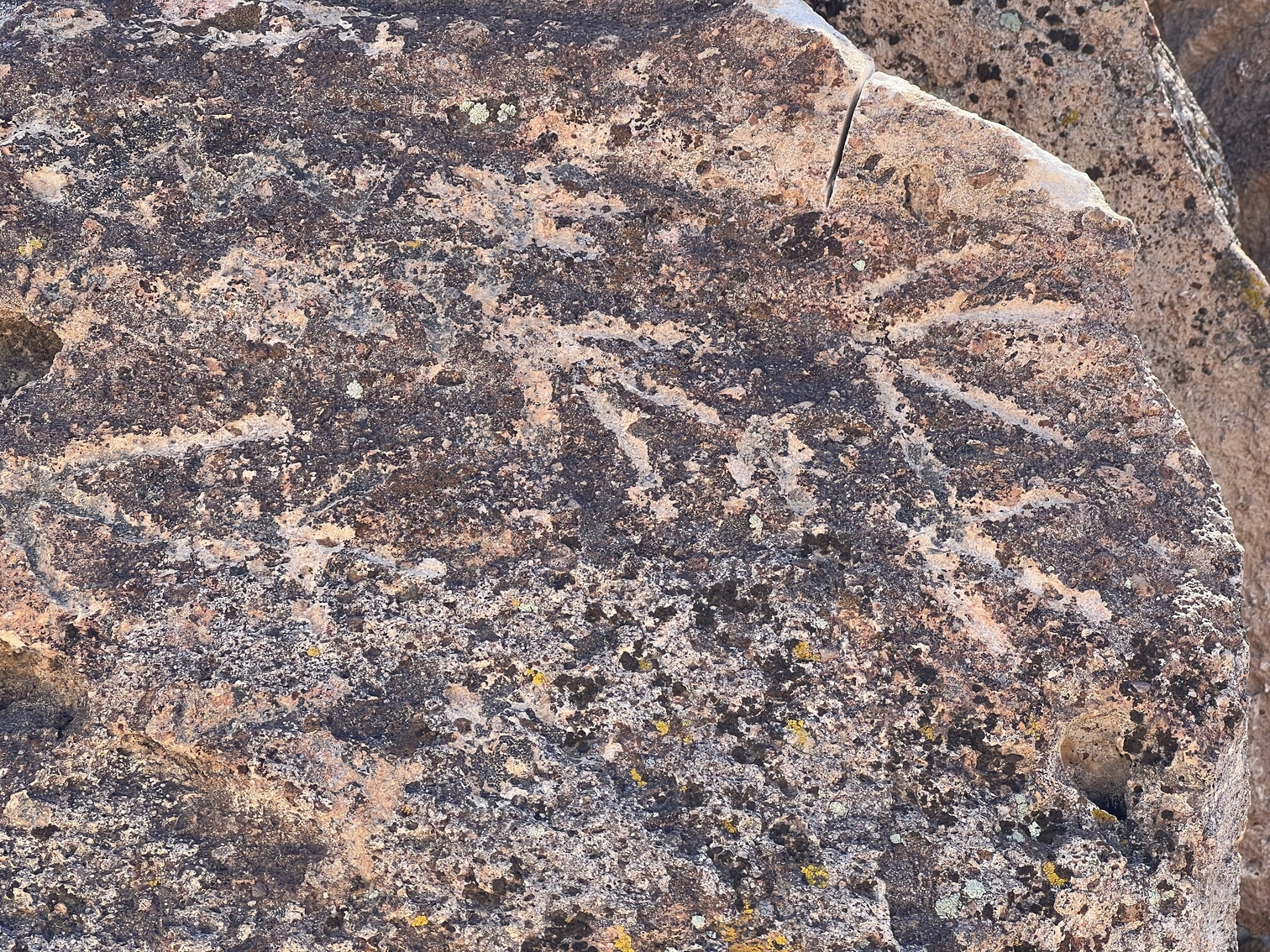 Red Canyon Petroglyph, with Sawcut Defacement Upper Right
Red Canyon Petroglyph, with Sawcut Defacement Upper Right
THE BLUEBIRD LADY
Bold song, the house wren’s,
arpeggios fortissimo, much finer
than the vacillating converse
of the blue thrush
The bluebird lady shoos away wrens
but kills sparrows
tosses their nests out
of her bluebird boxes, and if
she catches a sparrow she wraps it in a cloth
hits it with a hammer
and tosses it to her cat
Never knew she would do such a thing but
sparrows kill bluebirds
and fair’s fair.
______________
Marte Carlock
Review by Jared Pearce
What I like best here is how the poem begins so nearly conventionally with birdsong outside the house. And then the lady shows up and begins whacking sparrows, and then the fairness of the whole ordeal is pointed out—and it’s the quickness of the turn from pretty birds singing to smooshed sparrows getting chucked to the cat that for me resembles nature and how we consider and participate with it.
Review by Ettore Fobo
Cruelty, human madness, loom to shatter every possible natural idyll in this effective and raw poem “Lady Bluebird,” where the killing of sparrows by an unidentified woman is recounted in harsh tones. These verses reminded me of certain explorations into human violence seen in the poems of Sharon Olds. Marte Carlock’s poem seems rough, dry, and cruel, with lines that don’t offer the reader easy oases of rest but rather shake them, confronting them with something painfully inevitable and incomprehensible. Here, indeed, senseless cruelty is told, a banal yet unheard-of violence, disturbing, sinister, violence that seems to have no purpose other than perpetuating its own absurdity. Yet in the end, within this same absurdity, a sort of fatal justice emerges, perhaps karmic, enunciated with a cold yet relentless lightness, like nature itself: “Never knew she would do such a thing but/sparrows kill bluebirds/and fair’s fair.” Nature is cruel. Schopenhauer and Leopardi may therefore secretly hover in these verses.
Review by Joshua St. Claire
As I read the latest edition of Triggerfish Critical Review, I just couldn’t shake Carlock’s “The Bluebird Lady.” First, I was shocked—and intrigued—by the cruelty of the titular character. I have met a few “bluebird people” in my time but never knew about their aversion to the wrong kind of bird. The onomatopoeia in the first stanza (“arpeggios fortissimo” and “vacillating converse”) was quite striking. I particularly admired how Carlock elevated the house wren’s song by using the Italian. As I reread, I couldn’t help but wonder if there is some implied allegory to our political landscape—a commentary on the plight of migrants, perhaps? The house sparrow is, after all, an invasive species. The blue of bluebirds represents one side of the red/blue divide. Or does it? The bluebird has blue, reddish, and white feathers. Who is the bluebird lady in this interpretation? Some power behind the throne? The so-called “Powers-That-Be?” Although all these pieces do not fit into place precisely, their ambiguity adds another layer of richness to this poem. “The Bluebird Lady” goes beyond mere narrative and rewards rereading.
